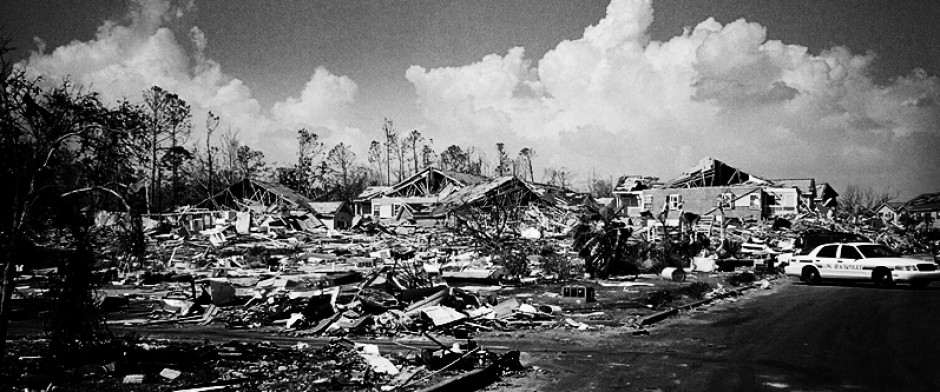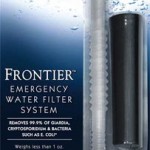
While reviewing preparedness plans I find consistent oversights respective of properly preparing to maintain gear and equipment. One glaring shortfall is that individuals nearly always fail to have stocked proper tools and supplies for firearms maintenance. This article addresses the issue and provides some simple, improvised solutions that will keep your firearms in top notch working condition.
People are very particular about the type of firearm(s) they select for home defense and survival. They spend countless hours deciding on what mix of firearms will suite their needs best and this is very worthwhile. However, when I ask them how to field strip and maintain the firearm, all too often, I get a blank stare or what amounts to a futile attempt to demonstrate the proper maintenance technique for the firearm. This oversight never ceases to amaze me. A person will spend thousands of dollars for a top of the line rifle, scope, ammo, and extra magazines, but have no idea on how to actually maintain, repair, and care for the weapon. They will also stockpile thousands of rounds, but barely practice with the gun. Owners of AR-15 variants are by far the worst offenders since the AR is a complex firearm that requires thorough cleaning and maintenance after “every” use or it will cease to reliably function. Further, when I ask what supplies they have for cleaning; most people can only produce a small can of gun oil and a few patches. This situation is unacceptable and will lead to a critical failure point in any preparedness plan, but is easily preventable.
To remedy this situation, you must first read your instruction manual for your firearm. Yes, you actually need to do this. The manufacturer will provide you the proper procedures for safely field stripping, cleaning, maintaining, and operating your firearm. For older firearms or ones without instruction manuals, I have been able to find the necessary instructions online for nearly every firearm I have encountered. Often, you are able to download a PDF document directly from the manufacturer. For more complex operating systems such as that found in the AR-15 variants, it may be best to get with a former soldier or Marine and have them show you the proper techniques. In particular, the bolt and bolt carrier group (BCG) in AR-15 style weapons are troublesome and require an inordinate amount of attention and cleaning. Most people simply do not realize the time and labor required to keep a weapon such as this operational under battlefield conditions. In future articles, we will discuss in detail the maintenance procedures for an AR style rifle.
After mastering assembly and disassembly of your weapon there are a few basic tenets of cleaning to know. The first is to clean any major dirt, dust, and debris from your weapon. This is an important first step because any residual dirt, sand, dust, etc. will mix with gun oil and can cause a weapon failure. It can also scar the finish and lead to corrosion and rust. Second, you need to remove carbon and lead/copper fouling that may have accumulated in the firearm. This is usually the worst in the chamber, barrel, bolt, and/or feed ramps. To clean, use solvents to loosen and dissolve the fouling and then scrub the affected area with a stiff plastic or brass brush. Be careful to avoid plastic parts and wood finishes on any firearm when cleaning with solvents. Although many gun solvents claim to be universally safe, it is a best practice to prevent solvents from coming into long term and repeated contact, especially, with plastics and composites. Solvents also tend to be very unhealthy so you should always wear protective gloves and eyewear and use them in a well-ventilated area. Solvents “dry” out the metal and leave it more susceptible to rust, corrosion, and friction. As such, the last step in cleaning is to lightly oil the gun and wipe it down paying special attention to scrub any areas where rust has formed or may form. In wet or humid environments, the liberal use of oil will prevent rust and corrosion; however, in dry, dusty areas, very light oil or dry lubricants are best. For example, in an area like Arizona, a gun that is too “wet” will mix with dust to form a gunk. This paste made of oil and dirt will jam an operating mechanism, especially in semi-automatic style weapons, such as AR variants, and cause them to fail or improperly operate.
Now that you know how to field strip and clean your firearm, you will need to have the materials to clean it with. You can buy a host of gun care products. Names like CLP®, RemOil®, and Hoppes® are well known as leaders in gun cleaning supplies. You can also buy very expensive cleaning kits. Otis produces high quality cleaning kits with specialized brushes and gun oils. When it comes to cleaning solvents and oils, I find it best to stockpile these in bulk and then transfer them to small bottles. However, improvised tools, solvents, and oils can do just as well for far cheaper. They may also be all that’s available during a grid down situation. For a cleaning brush, just use an old stiff bristle toothbrush. Any old t-shirt or cotton cloth can be used as a cleaning rag. Cotton t-shirts can then be cut up to make cleaning patches. For solvent, carburetor cleaner works very well to dissolve carbon, but one must be careful not to get it on plastic or composite parts. Gun oil is by far the easiest to improvise and everything from a light coat of WD-40® to synthetic motor oil can be used in a pinch. However, vehicle transmission oil appears to most closely match actual gun oil and even has a detergent effect. Transmission oil works across a broad range of temperatures, effectively lubricates even under high heat and friction, is dirt cheap, lasts indefinitely, and is available throughout the world. Further, we have tested it on numerous weapons to include M-4/AR-15 style weapons and are aware of numerous major police department SWAT units that regularly lube their pistols and assault rifles with transmission oil with positive results. Having a cleaning rod is usually the most difficult piece to improvise; especially, for small caliber weapons. Nonetheless, one can use commercially produced rods and tips or a BoreSnake® type device, which we found to be an excellent way to quickly clean a rifle bore in seconds. We also were able to improvise effective rods by taking copper wiring (appropriate in size to the bore diameter) and just bending a J-hook in the end to hold a patch and then pulling it through the barrel. Note that you should always clean a firearm from bore to muzzle and pull not push a patch through it. We were also able to find shoelaces and braided rope that fit most calibers and could be used to improvise various BoreSnake® type cleaning devices. Heavy test fishing line also worked well when a non-steel hook was used and bent flat together with pliers to hold a patch.
In conclusion, you must plan and prepare adequately for the maintenance and cleaning of not just your firearms, but all of your gear and equipment. Knowing how to use it is only half of the equation. To get safe, reliable, long-term service from gear and equipment, you must properly maintain it. Knowing how to do this with improvised materials easily found around the world is key to a sustainable and robust preparedness plan. Remember, even the best quality equipment will fail if not properly maintained.
By Guiles Hendrik
All rights reserved.



 To perform the Owen Technique®, the flashlight is held by the thumb as the light rests inline and on top of the area between the knuckle and middle joint of the index finger when using a shooting grip with the wrist pointed forward and locked out. The hand and light positioning allows for the weak side index finger to point forward with the gun or wrap the trigger guard depending on shooter preference and size of the light and handgun. The remaining weak hand fingers wrap around the pistol grip over the strong side fingers per a normal grip. The strong side grip is virtually left unchanged other than the thumb, which still wraps the handgun’s pistol grip but stays slightly
To perform the Owen Technique®, the flashlight is held by the thumb as the light rests inline and on top of the area between the knuckle and middle joint of the index finger when using a shooting grip with the wrist pointed forward and locked out. The hand and light positioning allows for the weak side index finger to point forward with the gun or wrap the trigger guard depending on shooter preference and size of the light and handgun. The remaining weak hand fingers wrap around the pistol grip over the strong side fingers per a normal grip. The strong side grip is virtually left unchanged other than the thumb, which still wraps the handgun’s pistol grip but stays slightly










